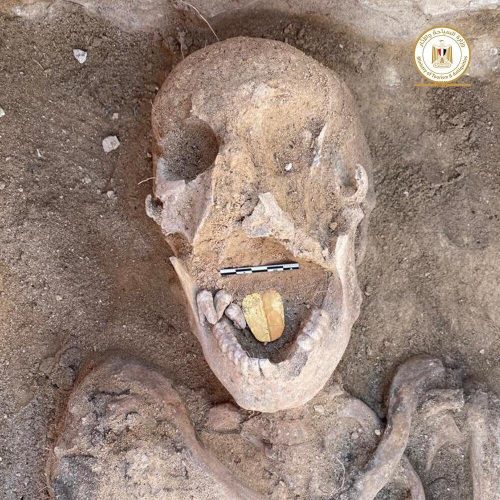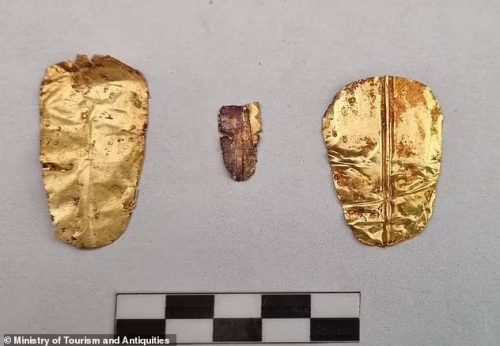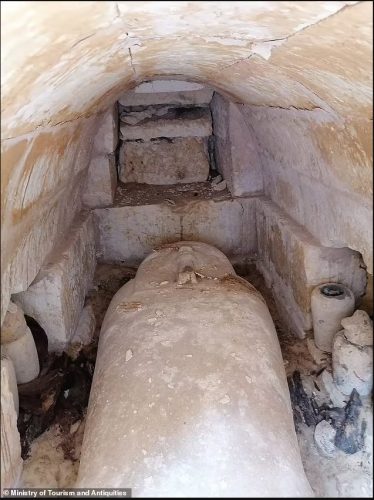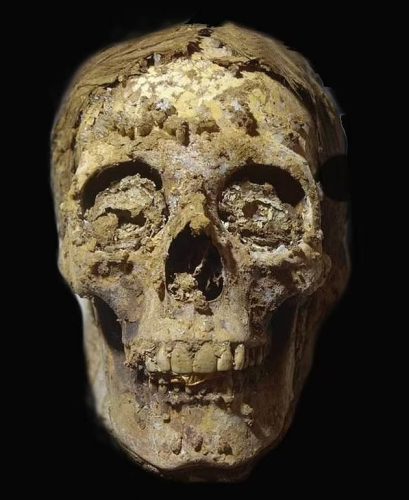In the annals of history, the discovery of ancient human remains often reveals fascinating insights into the lives of our ancestors. From the pyramids of Egypt to the tombs of China’s emperors, these discoveries continue to captivate our imaginations.

However, few discoveries are as intriguing and as evocative as the recent revelation that the tongues of 2,500-year-old individuals have been replaced by what can only be described as “golden tongues.” This remarkable find has not only added a new layer to our understanding of ancient cultures but has also sparked a range of questions and debates in the fields of archaeology, anthropology, and beyond.
The Unearthed Mystery
The story begins in an archaeological excavation site in the heart of what was once the ancient city of Acanthus, located in modern-day Greece.
Acanthus, a city with a rich history dating back to the 7th century BCE, was known for its prosperity and significance in trade, politics, and culture during its heyday. Excavations in this region have often yielded valuable artifacts, but nothing could have prepared archaeologists for the startling discovery they made.
During a routine excavation in a burial site believed to date back to the 5th century BCE, researchers unearthed a set of well-preserved human remains.
Among these remains were three skeletons, two belonging to males and one to a female, all of whom were estimated to have lived approximately 2,500 years ago. While the skeletons themselves were intriguing, it was the condition of their oral cavities that left experts baffled.
Golden Tongues Unveiled
Upon closer examination, it became apparent that the tongues of these ancient individuals had been replaced with what appeared to be golden prosthetics. The prosthetic tongues were intricately crafted, demonstrating a level of skill and precision that was unexpected for the time period.

Furthermore, these golden tongues exhibited a level of craftsmanship that was unparalleled, even by today’s standards.
The use of gold for such a purpose in ancient times is unprecedented, leading experts to ponder several questions:
- Purpose and Significance: Why were these individuals given “golden tongues”? What was the cultural or ritual significance of this practice?
- Technological Advancement: How did the people of Acanthus possess the knowledge and technology to create such intricate prosthetics during that era?
- Social Status: Did the presence of golden tongues indicate a particular social status or role in society for these individuals?
Interpreting the Findings
The mystery of the golden tongues has led to various theories and speculations among experts in the field. Some believe that these prosthetic tongues may have been a form of post-mortem ritualistic practice, intended to ensure that the deceased could continue to communicate effectively in the afterlife.
Others posit that it might have been a status symbol or a mark of distinction for the deceased, possibly indicating their role as leaders or influencers within the community.

The level of craftsmanship displayed in creating these golden tongues raises questions about the technological capabilities of the ancient Acanthians.
Some researchers suggest that the city’s wealth and thriving trade routes may have allowed them access to advanced metallurgical techniques that were not widely known elsewhere during that period.
Conclusion
The discovery of the “golden tongues” in the mouths of 2,500-year-old individuals in Acanthus has unveiled a remarkable mystery that continues to intrigue archaeologists, anthropologists, and historians alike.
This find not only sheds light on the advanced skills and techniques of an ancient civilization but also challenges our understanding of their cultural beliefs and practices. As researchers continue to unravel the secrets behind these golden tongues, it is certain that the enigmatic past of Acanthus will continue to captivate our imaginations and broaden our knowledge of the ancient world.







